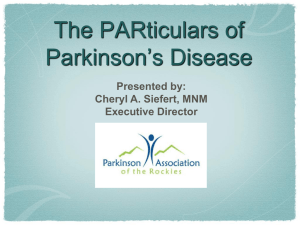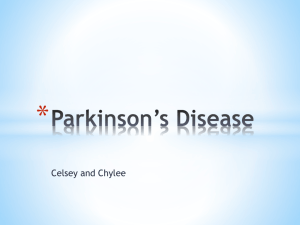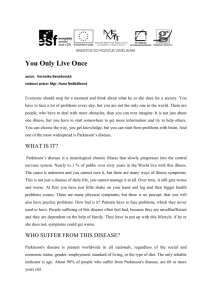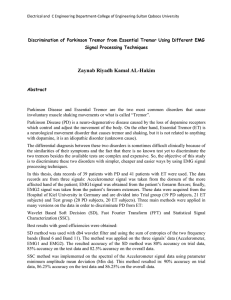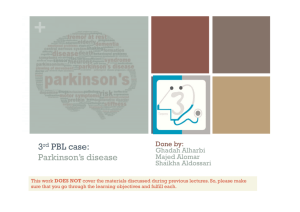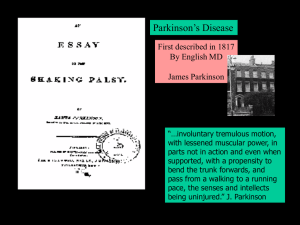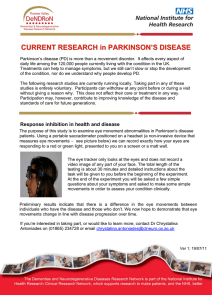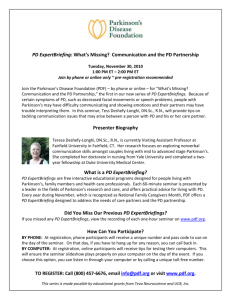WHAT EXACTLY IS PARKINSON'S?
advertisement
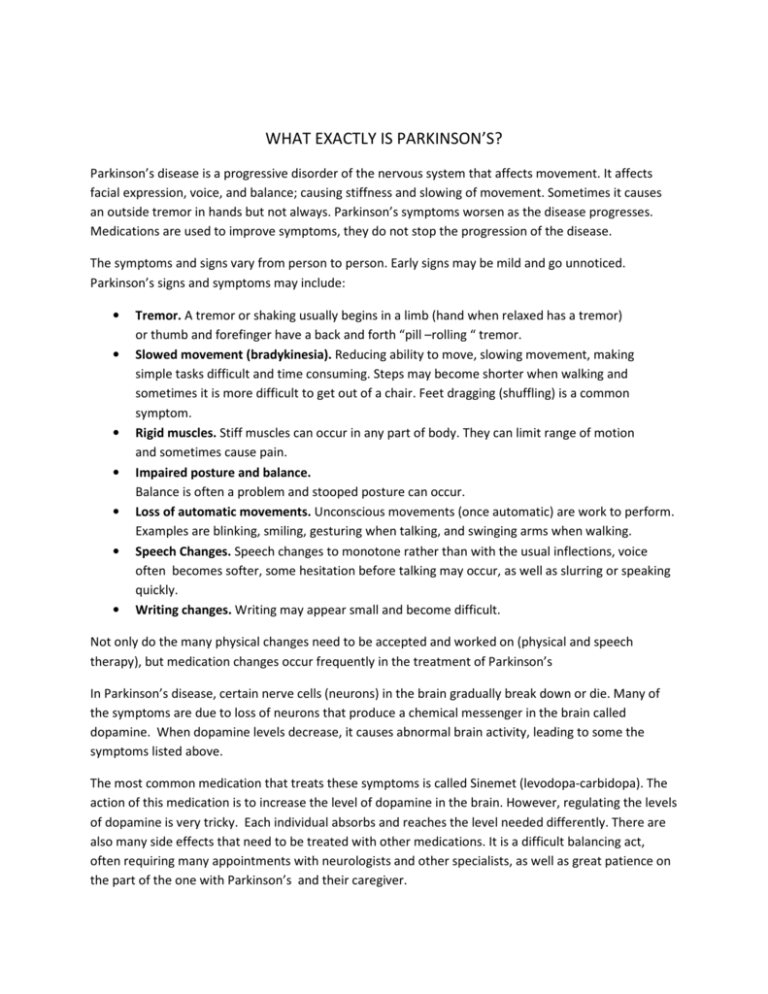
WHAT EXACTLY IS PARKINSON’S? Parkinson’s disease is a progressive disorder of the nervous system that affects movement. It affects facial expression, voice, and balance; causing stiffness and slowing of movement. Sometimes it causes an outside tremor in hands but not always. Parkinson’s symptoms worsen as the disease progresses. Medications are used to improve symptoms, they do not stop the progression of the disease. The symptoms and signs vary from person to person. Early signs may be mild and go unnoticed. Parkinson’s signs and symptoms may include: • • • • • • • Tremor. A tremor or shaking usually begins in a limb (hand when relaxed has a tremor) or thumb and forefinger have a back and forth “pill –rolling “ tremor. Slowed movement (bradykinesia). Reducing ability to move, slowing movement, making simple tasks difficult and time consuming. Steps may become shorter when walking and sometimes it is more difficult to get out of a chair. Feet dragging (shuffling) is a common symptom. Rigid muscles. Stiff muscles can occur in any part of body. They can limit range of motion and sometimes cause pain. Impaired posture and balance. Balance is often a problem and stooped posture can occur. Loss of automatic movements. Unconscious movements (once automatic) are work to perform. Examples are blinking, smiling, gesturing when talking, and swinging arms when walking. Speech Changes. Speech changes to monotone rather than with the usual inflections, voice often becomes softer, some hesitation before talking may occur, as well as slurring or speaking quickly. Writing changes. Writing may appear small and become difficult. Not only do the many physical changes need to be accepted and worked on (physical and speech therapy), but medication changes occur frequently in the treatment of Parkinson’s In Parkinson’s disease, certain nerve cells (neurons) in the brain gradually break down or die. Many of the symptoms are due to loss of neurons that produce a chemical messenger in the brain called dopamine. When dopamine levels decrease, it causes abnormal brain activity, leading to some the symptoms listed above. The most common medication that treats these symptoms is called Sinemet (levodopa-carbidopa). The action of this medication is to increase the level of dopamine in the brain. However, regulating the levels of dopamine is very tricky. Each individual absorbs and reaches the level needed differently. There are also many side effects that need to be treated with other medications. It is a difficult balancing act, often requiring many appointments with neurologists and other specialists, as well as great patience on the part of the one with Parkinson’s and their caregiver. No illness is easy. We cannot and should not compare individuals with similar diagnosis or individuals with different diseases or disorders. All are a struggle and a challenge. What can we do to help our congregational members who are challenged with Parkinson’s? This is a question that has been weighing on my mind for some time. I welcome any suggestions. I do believe there are some things we can try: • • • • Pray for the person afflicted as well as their caregiver. When you notice they have missed some church services, send them a card or an email. Let them know you are praying and thinking of them. When you visit ( either by phone or in person) ask them what they would like the congregation to pray for (specifics are great: more sleep, less anxiety, less sleep and more fun, their loved one who is caring for them, a special meal, help with household chores, etc.) Then ask if you can call or email the prayer team with this information. Ask the Pastors, Parish Nurse, BeFrienders how the parishioner is doing. BUT DO NOT expect to get details. Confidentiality is always important. Then suggest things you or someone else can do to help. Secondly, carry out your plan. Team work is the best solution to getting helpful things done. Written by Jane Beckstrom, PN Information obtained from Mayo Clinic newsletter .
